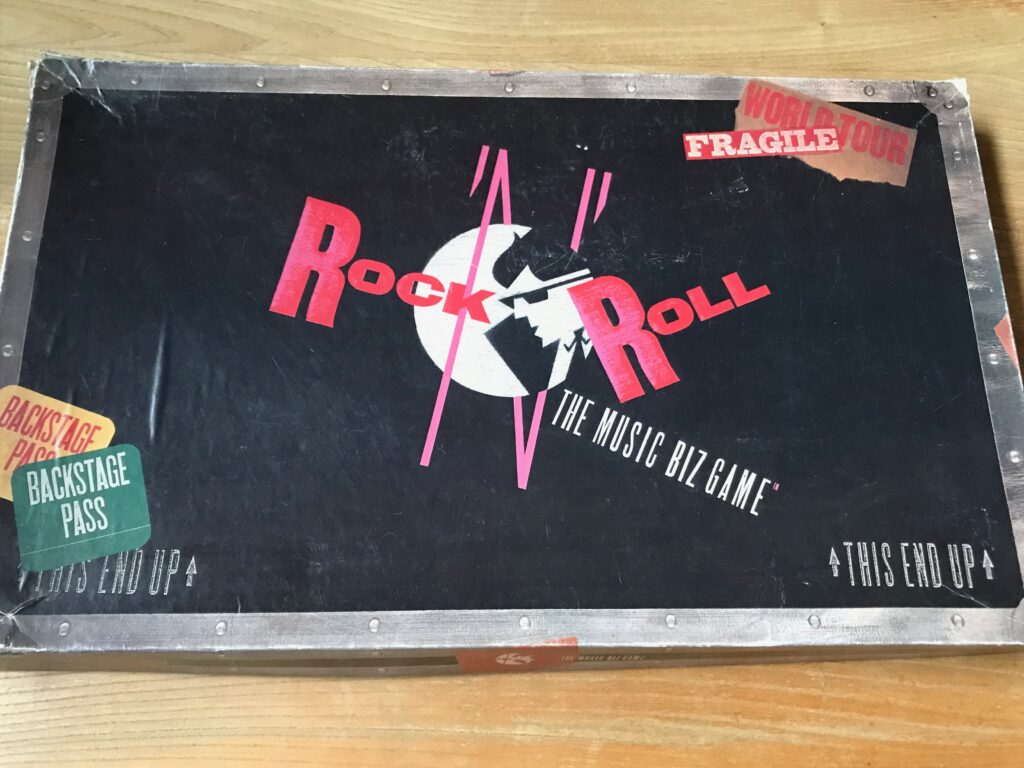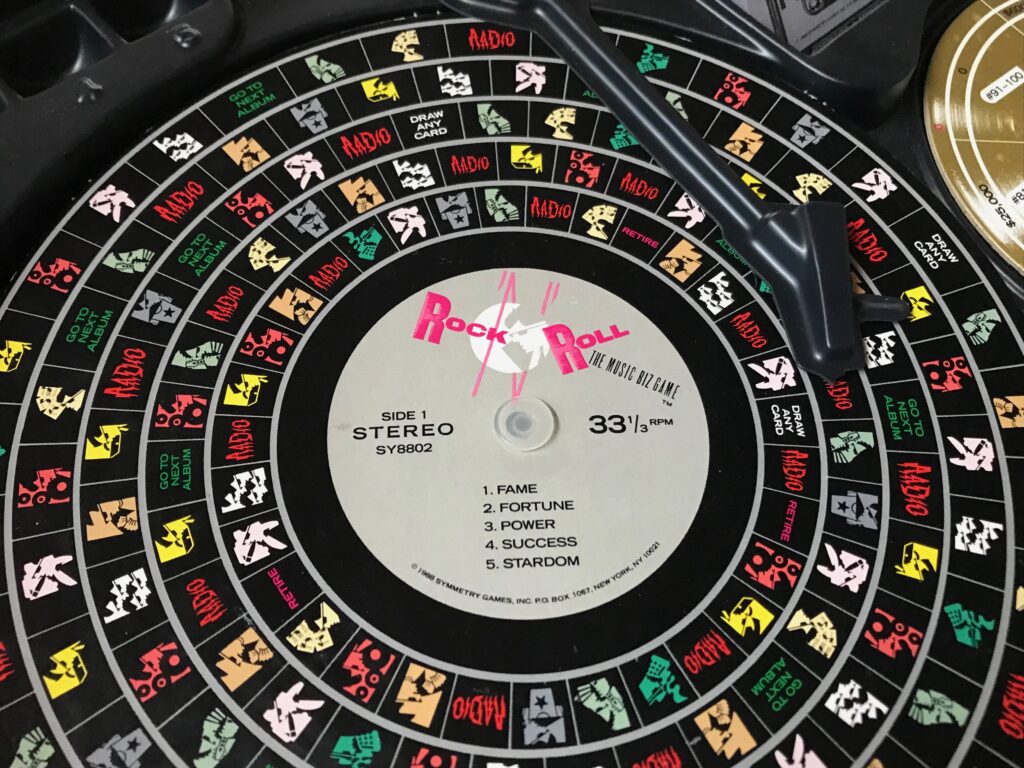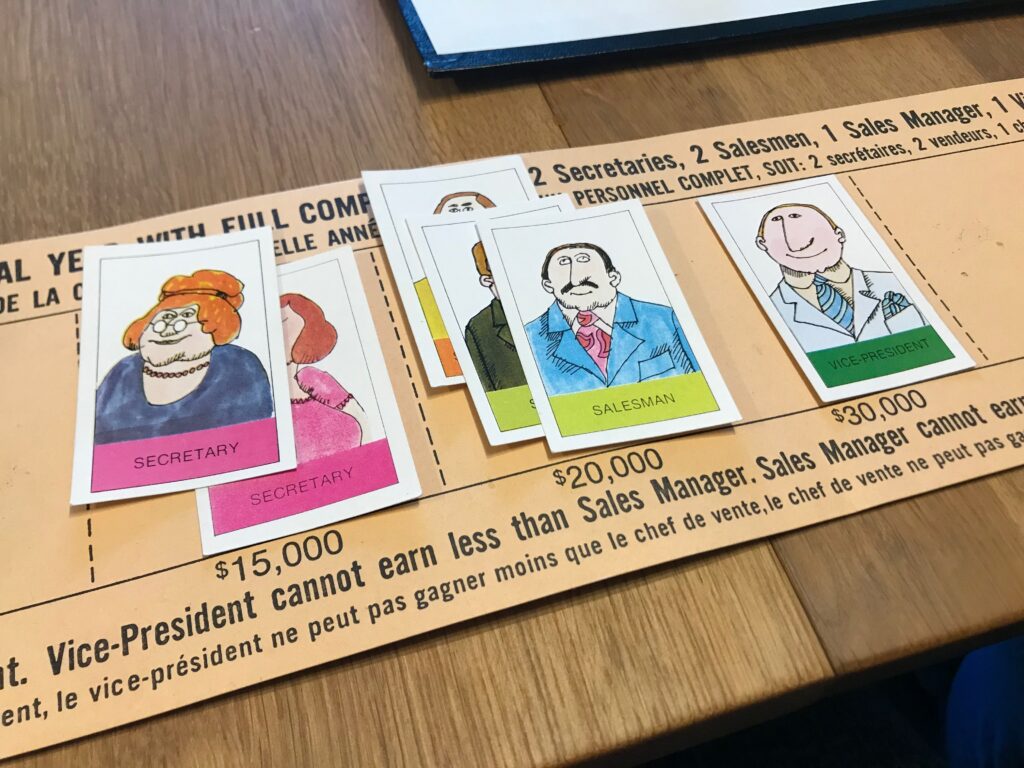The box of Skirrid proudly announces that it only takes three minutes to learn how to play and that’s definitely correct. With modern games being so complicated it was actually quite refreshing to open up something and be playing it within a few minutes, rather than spending a good 30 minutes wading through a long instruction booklet.
What is Skirrid?
The Skirrid board consists of a 19 x 19 grid which has two differently coloured areas – with a white lozenge-shaped central arena at the middle. Every second square on the board has a number on it, with a general rule of lower numbers on the central squares and higher numbers near the edges and corners. The values are not evenly distributed though and one corner scores more highly than the others. There is a bit of a feel of scrabble about it in the way that the numbers are distributed and you can imagine triple word score spaces where the highest numbers are.

Players are provided with tangram shapes and in the two player version of the game each player has 18 of these. One player’s are clear plastic and the other’s have a smoked effect to them. Some of the shapes have numbers engraved on them – more about those in a moment.
How to play
Play starts in the centre of the board with the first player laying down a shape of their choice making sure they cover the very central square. They then score points for whatever numbers their shape covers. The second player then continues with laying one of their shapes so that one edge of it is adjacent to an existing shape.
Should you lay a shape with a number on it and that number is over a number on the board then the two numbers are multiplied together to give you your score for that turn. Scoring is undertaken on a very complicated scoring board. You move a counter along the board to show your score, but this is designed so that once you get to ten you need two counters – one to show how many tens you have scored and the other to show the number of units. A third counter is required once you get to a score in the hundreds, meaning that in a two player game you can end up with six identical counters on the score board. Far from easy to keep track of what is going on, especially as they’re all black and blend in somewhat with the black background!

Adding more players
We only tried Skirrid out as a two player game, but the instructions do allow modifications so that you can have up to six players in total. There are options of playing it as two teams, or all as individuals. The latter means that the concept of having one colour of plastic shapes each goes out of the window, but also so does the doubling and tripling of scores for when there is a number engraved on the shape.
What we thought of Skirrid
Skirrid was a nice and simple, easy to understand board game, but at the same time it had a feel about it that made me think of rainy holidays where it had been found in a cupboard in a holiday cottage or caravan somewhere and was pulled out as you’d exhausted all other entertainment possibilities. It didn’t exactly blow me away at all. It certainly has a very retro feel about it.
We’d played a two player game with the quick start instructions, but reading up afterwards I realise that we’d overlooked the fact that you’re supposed to only play inside the white area on the board until you’ve scored at least 75 points (hence the blue shading against 70 and 5 on the score board). There is also a more complicated rule in which you can place a shape upside down on the board. In doing so you don’t score any points for it, but it means that you can’t then place another shape adjacent to it – hence possibly blocking a high scoring part of the board from another player.

Skirrid is very much the sort of game that would appeal to logical thinkers, and I think it is the prefect sort of game for adults and children to play together. Maybe that’s what I can see it so clearly appearing in a cupboard in a holiday cottage somewhere? I quite liked it as a two player game, but feel it might have quite a different dynamic with more people around the board. If we had endless space in the house I think I would hang on to it for family get-togethers, but as it is I’ve relegated it to the charity shop pile.
Are you a fan of vintage board games?
If you’re interested in vintage board games then why not head over to Facebook and join our new vintage board games group.
For more vintage board games and toys here on Penny Plays take a look here.























